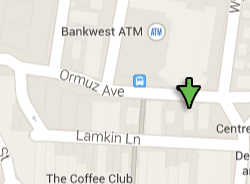MOLECARE ORMUZ AVENUE
Why skin type matters
Skin Type: When we were conceived, the genetic ‘blueprint’ for our body was set and this included the colour of our skin.
Melanin is the pigment that colours our skin. Melanin pigment harmlessly absorbs UV light and also cleans up toxins that result from UV damage to skin cells, thereby playing a very important role in preventing UV skin damage and reducing skin cancer risk by shielding the skin cell’s DNA from UV damage.
Melanocytes, located in the basal layer of the epidermis, are the cells that make melanin. No matter what colour of skin, everyone has basically the same number of melanocytes in their skin.
The skin colour varies between people based on how much melanin pigment is made and carried to the upper layers of the skin. The more melanin in the upper layers of the epidermis, the darker the skin.
Skin tanning occurs when UV light stimulates melanocytes to produce more melanin to protect the skin against further exposure to the sun by filtering out some of the UV rays. Even a light skin tan is a sign that you have been exposed to too much sun. A skin tan provides minimal protection from further UV damage (equivalent to a very low SPF sunscreen).
The skin colour of people with white skin is determined by the blue-white colour of the collagen and the colour of the blood in vessels in the dermis. Redness of the skin increases when skin blood vessels dilate in response to exercise, emotion and weather conditions.
There are six major skin types classified according to the amount of melanin in the skin:
|
Skin type |
Typical Features |
Tanning ability |
|
I |
Pale white skin, blue/hazel eyes, blond/red hair |
Always burns, does not tan |
|
II |
Fair skin, blue eyes |
Burns easily, tans poorly |
|
III |
Darker white skin |
Tans after initial burn |
|
IV |
Light brown skin |
Burns minimally, tans easily |
|
V |
Brown skin |
Rarely burns, tans darkly and easily |
|
VI |
Dark brown or black skin |
Never burns, always tans darkly |
Skin Type VI offers the greatest protection from UV damage, whilst Skin Type I offers the least UV protection.
It is important to understand which skin type you are and to be realistic about how much sun your skin can handle. If you are skin type I or II you will not be able to safely stay out in the sun for as long as your friends or family who are skin type III, IV, V or VI.
Your skin type and your life time exposure to UV light are the two biggest determinants of your risk of developing skin cancer.
Previous - Understanding skin Next – Why life time UV exposure matters





